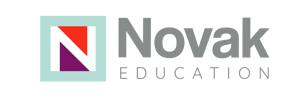We have had several educators ask us for UDL-driven resources focused on what an educator must possess to successfully engage in UDL for students. To look at this another way, what capacities does an educator need to have/be able to do to remove barriers to learning when designing Tier 1 instruction that is inclusive and equitable?
To create this tool, we first looked at the UDL 3.0 Guidelines, which identify predictable barriers that may prevent all learners from reaching high expectations in inclusive classrooms. Next, we examined the evidence-based research on best practices, frameworks, and strategies for eliminating those barriers. Finally, we linked resources to learn more about the skill set so you can consider how multiple evidence-based strategies can be used to universally design instruction for all learners.
Note that this tool is focused on first, best instruction. To meet the needs of all learners, it is critical that the system supplements targeted intervention and enrichment, so students move seamlessly between tiers academically, behaviorally, socially, and emotionally. When these services are necessary, it is essential that the support supplements and does not supplant Tier 1 instruction.
- Share the tool in an upcoming faculty meeting or professional development session. You can encourage colleagues to use the tool as a self-assessment. Educators can consider areas where they can identify relative efficacy and where they would benefit from collaboration, feedback, and support.
- Use the tool to vet your current professional development offerings. Are you providing ongoing support for all learners to implement barriers that may interfere with learning? If not, how could you begin to share or model strategies as you work as a team to scale inclusive practices in your school or district?
- Use as a tool to inspire action-oriented feedback within informal or formal observations. When you identify that students may face barriers, you may want to share some of the following resources to support educator practice.
Dive deeper into UDL. Explore our range of online courses, all universally designed.

Tool and blog have been updated since 2021.




